Wilderness Journal
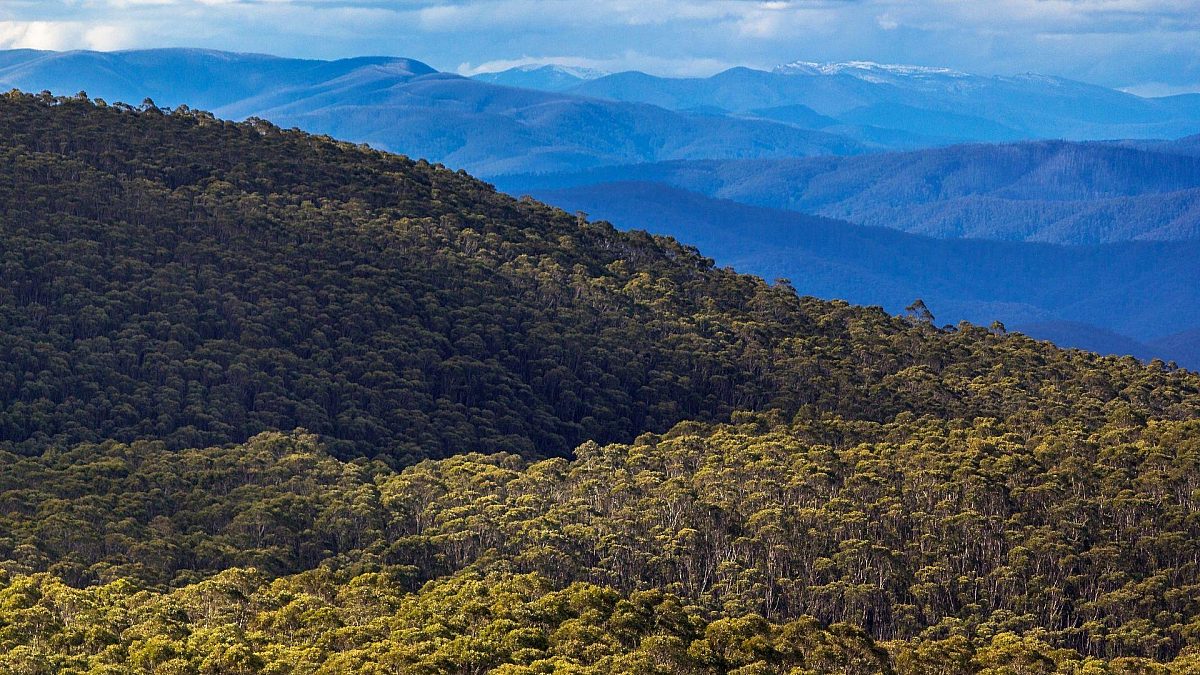
How your support gets turned into action
Thanks to you, together we are making a difference
We couldn't do it without you. With your support, here are just some of the highlights from recent months where we are making a difference for nature.
Image above: Victoria's Central Highlands, by Chris Taylor.
Over 10,000 of you want system change
Words by Jess Lerch, National Corporate Campaigner
Every year the Department of Industry, Science, Energy and Resources undertakes an Offshore Petroleum Exploration Acreage Release. Areas are submitted by petroleum industry players with no meaningful environmental or community consultation. The only way to participate in the process is to provide a submission to the release process.
It’s through this same mindless and automated process that last year there was a proposal to release acreage on the doorstep of Ningaloo and Gutharraguda (Shark Bay) in WA.
Because of your support, thousands of people like you added their names to our well-researched submission. For the first time in our experience, and in response to our collective action, the acreage was removed!
It is ludicrous that fossil fuel companies are driving what areas are released in this mindless and automated process. But processes can change, and it’s time for this one to.
Thanks to you, earlier this year, nearly 10,000 people added their names to the Wilderness Society submission to the Australian government opposing the release of new fossil fuel acreage and calling for a complete overhaul of this mindless annual handover of more and more of our marine environments to the fossil fuel industry.
Together, we can raise our voices to not just stop a risky project here and there, but change how Australia doles out oil and gas leases across the continent. If you haven’t already, there is still time to add your name to our petition to change this automated and mindless acreage release process. We’ll be delivering the petition before the APPEA conference—the oil and gas peak body—in June.
A future for Tassie's forests
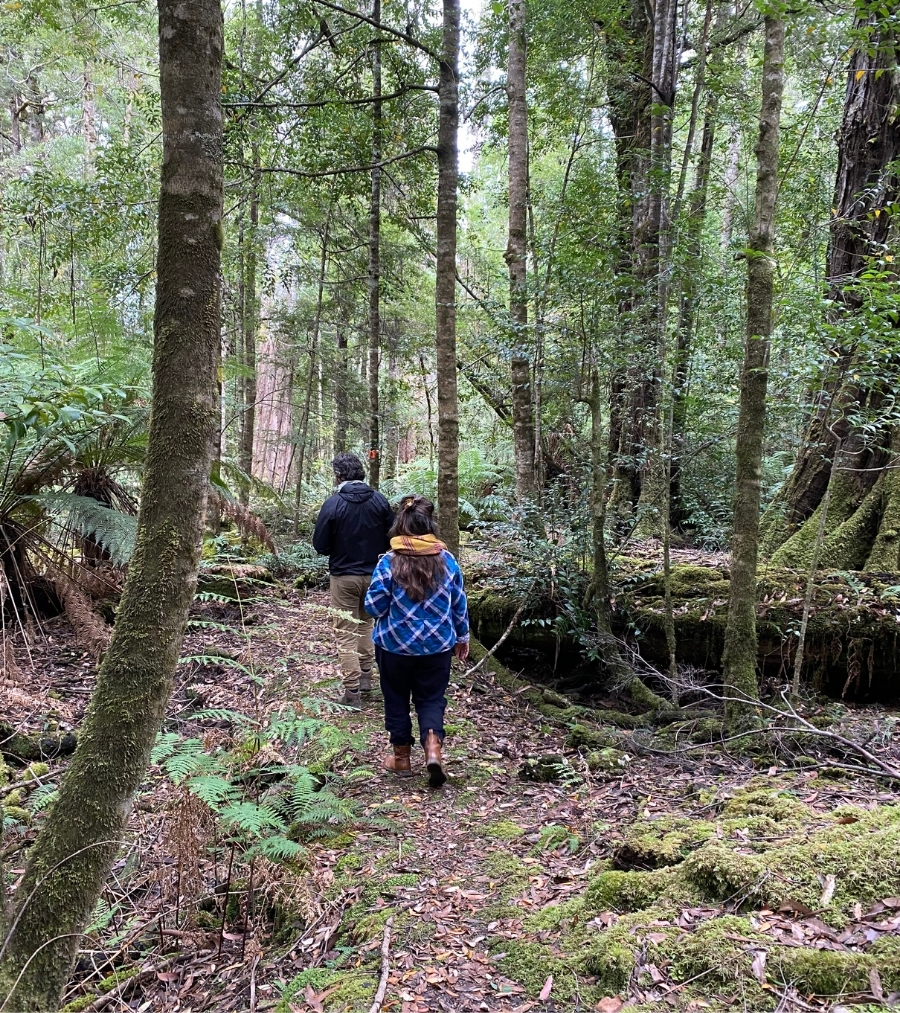
Words by Amelia Young, National Campaigns Director
A few weeks ago, I visited some beautiful old growth forest in lutruwita/Tasmania’s Florentine Valley. I walked between centuries’ old stringy barks and across moss-covered forest floor. The air was cool and quiet except for the squawks of birds in the canopy. The forest floor was springy with the layers of decaying leaves, sprinkled with mushrooms, lichen and slowly rotting branches. As we walked through, every now and then, a huge trunk would become visible, one of the giants of the forest stretching up into the light. Craning up you could see hollows formed over the hundreds of years these trees have been growing, the places for species to shelter and nest like the swift parrot and masked owl. Old forests aren’t just home to threatened species, they’re one of the best ways to combat the climate crisis—their rich soils and dense vegetation store carbon.
The only downside? This beautiful forest is in a logging coupe that could be destroyed at any time. And the reminder of that is just metres away—right next door to this forest teeming with life is a coupe that was recently decimated.
We walked up a rise in the forest and stepped out from the trees to witness devastation. Only a few trees remain standing—fragile giants that look lost and out of place without the rest of the life of the forest. Instead of a damp forest floor, piles of discarded trees and branches are waiting to be burned. The change in temperature is palpable—once we stepped out of the forest into the destruction it is hotter and drier and the only life is a few lone mosquitos.
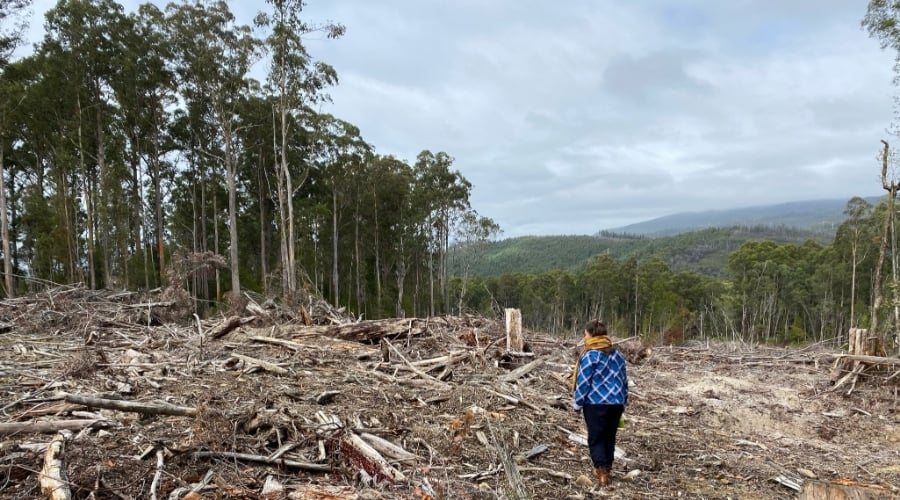
Just two kilometres away is the Tasmanian World Heritage Area—globally significant forests, protected from logging. Once again deep forest, ferns and moss, sassafras and eucalypts reaching to the sky, ferns spreading their fronds. This forest is safe because of the support of people like you. After almost three years of hard-fought negotiations in 2012, unions, government, industry and environment groups agreed to:
- Protect 504,000ha of iconic forests and wildlife habitat, including 400,000ha as soon as legislation is made;
- Create a World Heritage area over iconic forests like the Weld, Styx and Florentine valleys;
- Restructure the forestry industry and;
- Support struggling Tasmanian communities.
But in 2014, the Tasmanian government tore up this historic deal. Instead huge swathes of High Conservation Value forest—356,000ha—set aside for protection were instead made available for logging just last year.
I’ve spent my life campaigning to protect forests. I have found the best way for people to change their behaviour, their business’s policy or to understand the need for protecting Australia’s forests is to bring them to the forest. A healthy forest is good for the soul—it is rejuvenating and provides an irresistible sense of calm. A clearfell is soul destroying—and not enjoyable to visit.
Thanks to your support, the Wilderness Society is:
- Inspiring and requiring companies—including investors—to shift the dial on procurement and investment policies for forest protection—management for biodiversity, carbon, and recreation—not forest destruction.
- Exposing the lack of enforcement and compliance of laws and regulations, which means so many forest wildlife, like koalas, greater gliders, or spotted-tail quolls are headed for extinction—shockingly, Australia is the world’s leader in mammal extinction, with a record 34 mammals having been recorded as extinct since colonisation (compared to Haiti with nine, and the Dominican Republic with eight)
- Demanding a national database so that the condition of native vegetation, and the loss of it from deforestation, is clear, tracked well, and plain for all to see
- Supporting mechanisms that ensure First Nations Free, Prior and Informed Consent (FPIC) is required as part of government and corporate decision-makers’ choices and actions when it comes to deforestation
A great start to the year
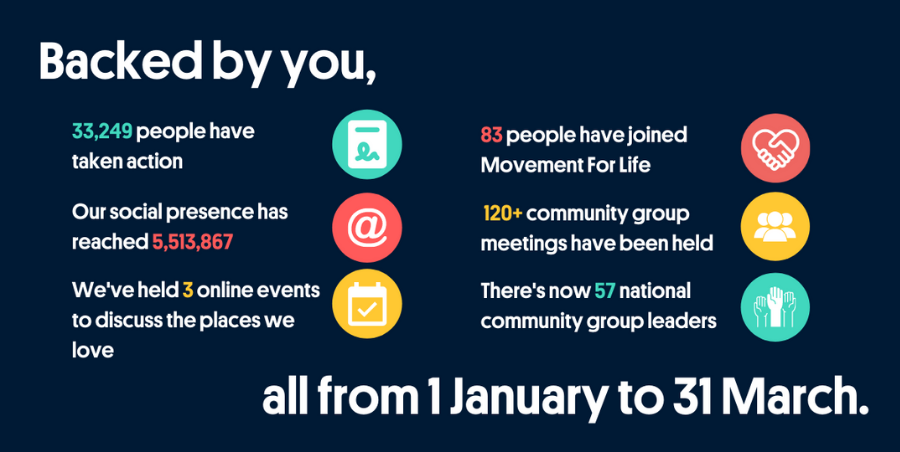
You’re giving communities a voice
Last year, your donations facilitated a series of online submission-writing workshops for community groups in Victoria around the state Inquiry into Ecosystem Decline. The purpose of these training sessions was to provide locals with guidance on how to use a story-based approach to voice their concerns to the government about nature. In March, the public hearing was held at Parliament and we were invited to present evidence.
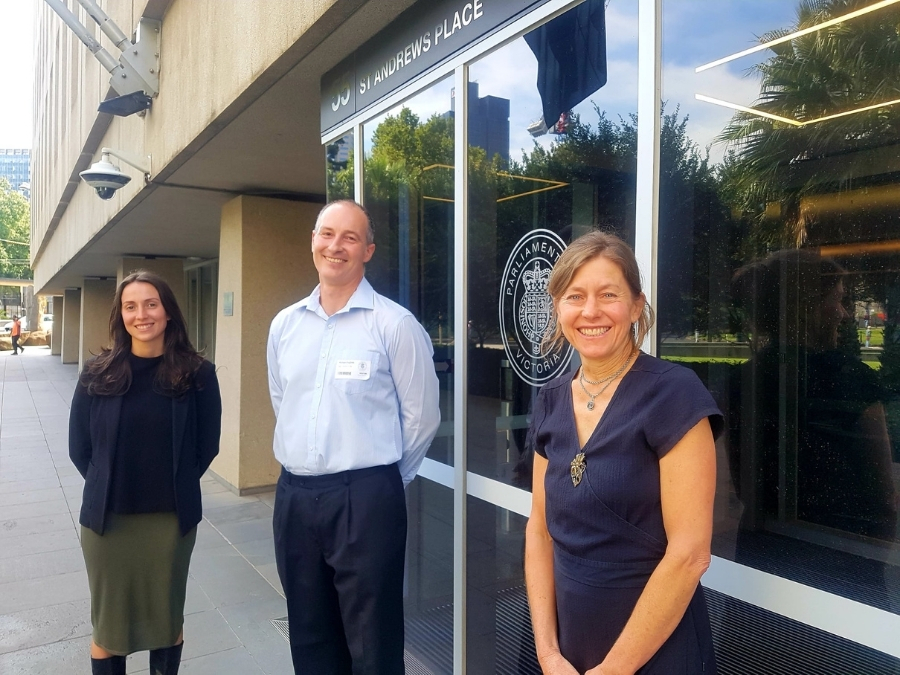
Thanks to the political training you helped provide, community organisers Annie and Jodie—alongside Victorian Campaigns Manager Richard—were given the opportunity to speak directly to the panel of 10 decision-makers. Both Annie and Jodie, and the communities they represent, are experiencing the destruction of nature firsthand, and their stories helped reveal the devastating reality that everyday Australians are facing on the ground.
“It felt really powerful to give a voice to the community,” Annie says. "Members of the panel shared their own stories after hearing ours. It really does work: telling your story will ignite something within them—from their memory, their childhood, their experiences—and connect you when they’re making these decisions.”
Jodie continues: “Often people want to do something to protect nature but they don’t quite know what to do, and I talked about the fact that the Wilderness Society is really tapping into that, and through community organising training, empowering those people who want to take positive action. So they feel like ‘hey, I can do something, and I can build my confidence to do that within the training the organisation provides.’”
The panel is expected to deliver its recommendations after the reporting period concludes on 30 September 2021.
Thousands of people have now completed our training courses across the country—and it’s all thanks to your support. Together, we’ll keep building our movement to ensure community members have their voices heard, when and where it counts.
Bird boards and world-class trails—the Emerald Link moves forward
Projects are taking shape across the Emerald Link proposal that will help restoration, protection and appreciation of the last unbroken forest wilderness area on mainland Australia. These forests—that connect alpine forests to the rugged coastline—were impacted by the Black Summer bushfires. Now, thanks to your support, better management of some local forests, with the involvement of local communities, is within reach.
And all of this can’t come fast enough, with state government logging underway right now in forests that survived the catastrophic 2019-20 bushfires. At the centre of the Emerald Link proposal is the recognition that recovery of forests, and of communities affected by logging and bushfire, go hand in hand.
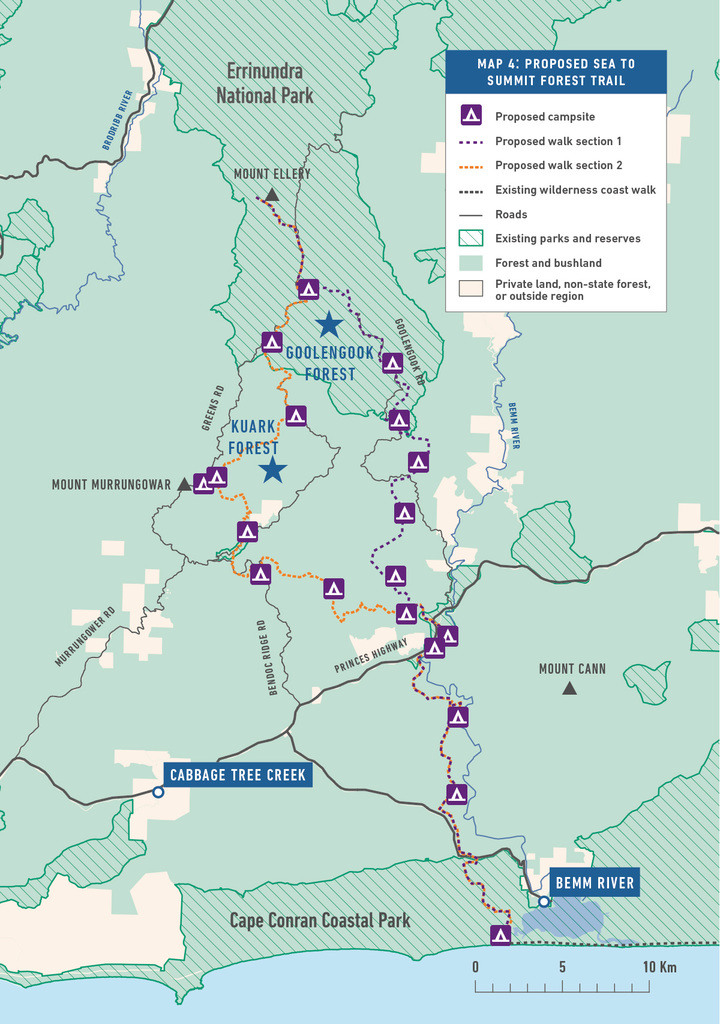
Formed in partnership with the Goongerah Environment Centre Office (GECO), one of the central pillars of the Emerald Link concept is the Sea To Summit Forest Trail, a proposed network of walking tracks and multi-use trails that link the coastal town of Bemm River and the existing Wilderness Coast walk to the summit of Mount Goongerah/Mount Ellery, one of the highest mountains in far East Gippsland. The Victorian government has committed $1.5 million to plan and establish the Sea to Summit. And scoping for the trail is underway right now.
The government now sees the Emerald Link Sea to Summit Forest Trail as a major means to help communities recover economically following the 2019-2020 bushfires. To that end it is conducting market research into what a successful conservation economy project of this kind would look like, and what people want to see and do when they visit the region. The initial results released earlier this year are overwhelmingly positive—there is a real desire to come and explore the temperate rainforests and diverse ecosystems of the regions within the Emerald Link.
“We’re hoping that the market research will be completed by the middle of this year,” says Emerald Link Regional Advocate Coordinator, Tom Crook. “The Wilderness Society and local conservation partner, Goongerah Environment Centre, will then continue to work with the government as major stakeholders to deliver what will be one of Australia’s most stunning multi-day walks, and a conservation economy project that will safeguard these forests and give a bright economic future for communities.” It’s all thanks to the continued support of donors like yourself. Hopefully you’ll be able to visit the Sea To Summit Forest Trail in the coming years.
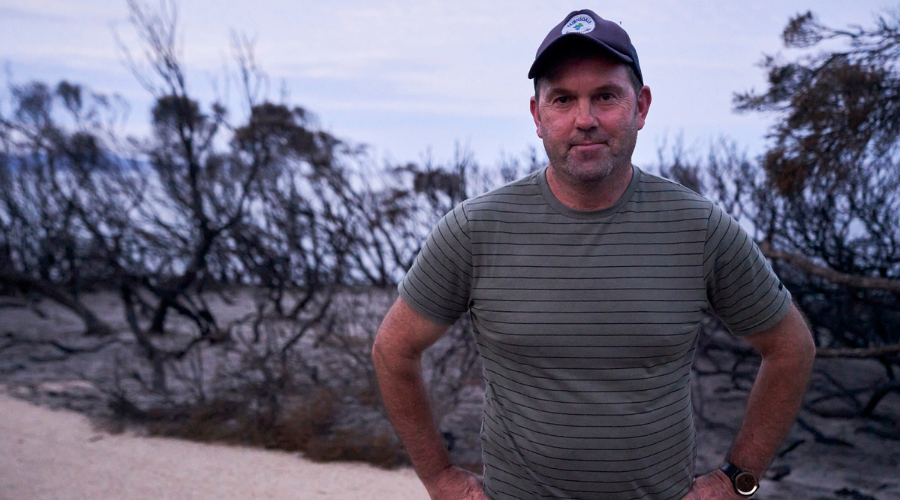
Further east, Emerald Link Regional Advocate Matt Stephenson is delivering locally made bird information boards in key locations around Mallacoota and Cann River. The bird boards form part of his work within the Coopracambra to Coast Emerald Link icon area. “This region on the eastern side of the Emerald Link proposal is a magnet for bird-watchers,” says Matt, who is more determined than ever to realise the full potential of the Emerald Link after the catastrophic Black Summer fires. “The bird boards will be positioned on trails we are delivering as part of the Emerald Link and will help raise awareness for the proposal.
"We’ve consulted the community and the response has been really positive. The boards will tell visitors about the birds in the area and the type of habitat that you are walking through that they rely on.”
It’s your continued support that means people like Matt are able to forge ahead with the transformative Emerald Link proposal, which will provide people living and working in the region fresh opportunities and improve restoration and management of these unique forest environments.